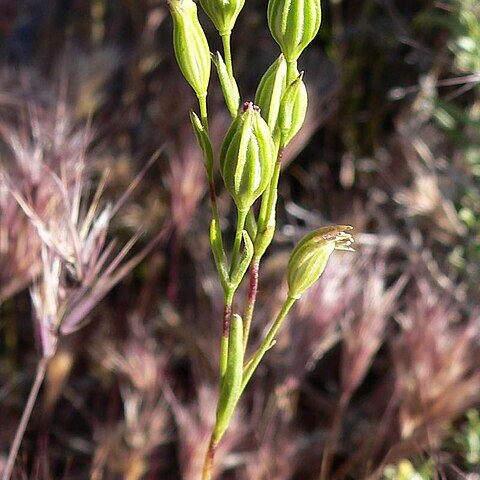Plants annual; taproot slender. Stems erect, simple or branched, slender, to 80 cm, subglabrous to retrorsely puberulent especially proximally, distal internodes frequently glutinous. Leaves 2 per node; blade with margins ciliate toward base, apex acute to obtuse; basal blades oblanceolate, spatulate; cauline narrowly oblanceolate to linear, 1-9 cm × 2-15 mm, scabrous or puberulent, rarely glabrous on both surfaces. Inflorescences cymose, open, branches usually ascending, several-to many-flowered, 1-flowered in depauperate specimens. Flowers: mature calyx prominently 10-veined, campanulate to ovate, 5-9 × 3-5 mm, margins dentate, glabrous, veins parallel, with pale commissures; lobes usually purple, triangular, acute, ca. 1 mm; petals white, often suffused with dark red, rarely wholly dark red, limb ovate, usually 2-lobed, ca. 2.5 mm, slightly longer than calyx, rarely petals absent, claw narrow, appendages 0.1-0.4 mm; stamens included; styles 3; stigmas included. Capsules equaling calyx, opening by 6 teeth; carpophore less than 1 mm. Seeds dull gray-black, reniform, 0.5-0.8 mm diam., finely papillate. 2n = 24.
More
Annual, 2–8 dm, often puberulent below, glabrous above except usually for some glutinous bands below the upper nodes; basal lvs oblanceolate to spatulate; cauline lvs oblanceolate to linear, 3–6 cm × 9–12 mm, the margins ciliate near the base; infl open; fls mostly ± numerous; cal 4–10 mm, 10-nerved; pet white or pink, equaling or exceeding the cal, 2-lobed, or obsolete, the appendages minute or none; carpophore 1 mm; fr 4–10 mm, 3-locular; seeds 0.5–0.8 mm wide, papillate; 2n=24. Sandy soil and waste places, through the U.S. and s. Can., apparently native. Summer.

